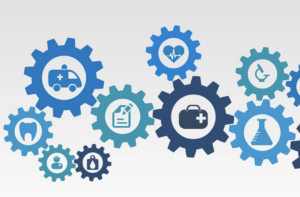Patient Engagement and Use of Technology
 By Arlene Maxim RN, HCS-C
By Arlene Maxim RN, HCS-C
COVID-19 has changed the outlook for telehealth. Providers quickly turned to telehealth and remote care monitoring to augment the much-needed services in the home. The gaps in care, as a result of the pandemic, were quickly closed when technology was adopted by providers.
According to an article by McKinsey and Company in May of 2020, the telehealth industry could reach a quarter of a trillion dollars. The pandemic quickly accelerated its application and literally forced both providers and patients to adapt to its use.
The Centers of Medicare and Medicaid (CMS) understands the cost savings. According to this same report, $250 Billion of taxpayer moneys could be virtualized. At the start of the pandemic, CMS swiftly expanded the approval of its use and lifted many of the restrictions placed on its use. Other surveys of potential technology adult users indicated they were “highly or moderately likely” to use the technology. Those who actually used the technology for care and communication with their healthcare provider had a 74% “rate of satisfaction”.
As proof of adult adoption of technology, in general, as a useful replacement for face-to-face clinical visits are reported in studies completed. Reports show more than 90% of adults in the United States owned a smart phone in 2015. This has increased by 65% in 2005. This is great news for the Remote Care Monitoring business as well as for the Medicare program. Remote Care Monitoring can easily be used to provide RCM services. The positive acceptance rate of the adult population using technology allows the remote care monitoring business to target both patients and providers who could benefit from its use.
Here are some valid statistics gathered relative to the data:
- Over 80% of patients indicate they have either sent or received text messages.
- Furthermore 99% of text messages are opened and 90% are read within three minutes of being sent.
Early indications that digital mobile heath interventions not only improve patient engagement and the ability and willingness to consistently maintain treatment programs.
Real time communication between clinicians and their patients improved the tracking of symptoms and increase patient compliance. Using technology to bridge the gap of care between in person visits by the clinician and the patient. The communication by either text or remote care monitoring empowers ordered self-care and relieves the stress clinicians now face with a decreasing staffing pool and limiting the chance of burnout.
While studies continue and we face a massive shortage of clinicians in the homecare and hospice industry, we expect the use of technology to increase immensely. It’s use not only relieves the pressure on clinicians to satisfy in-home face-to-face schedules, but outcomes will also improve and patients are more likely to stay engaged with the plan of care as a result of more frequent contact.
